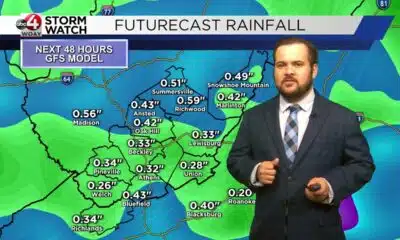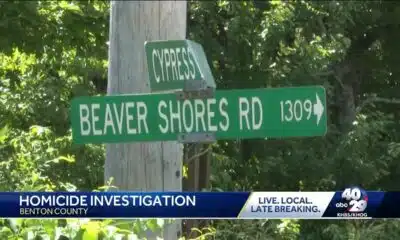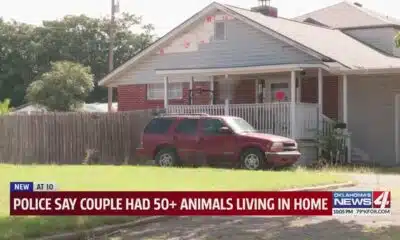News from the South - North Carolina News Feed
Roads across Western NC starting to reopen after Helene damage
Repaired. Replaced. Reopened. Hit hard by Helene, this is what paved the way for these NC roads to come back.
Roads are being rebuilt and bridges resurrected, but motorists are still struggling to traverse Western North Carolina.
That may not be for much longer though, as the state’s transportation department is slowly but surely progressing with recovery efforts.
Tropical Storm Helene’s devastation included more than 600 roads and 800 bridges primarily in the western part of the state. The latest data from the N.C. Department of Transportation shows that 160 roads remain closed — 30 highways and 130 secondary roads.
The task of repairing and reopening North Carolina’s roadways after the severe storm has been a tall order for the transportation department, which maintains more than 80,000 miles of roads. That’s more than any other state except Texas.
Still, repair projects are moving along, and rather quickly considering the wide-ranging damage.
Last week, Gov. Josh Stein highlighted the progress during a press conference in the middle of a closed section of Interstate 40 near the Tennessee border. Stein declared the vital thoroughfare would be partially reopened on March 1.
The announcement corresponded with a visit from new U.S. Transportation Secretary Sean Duffy, who came to the area to survey the damage. Duffy’s visit was significant because North Carolina is hoping to secure more federal funds to help pay for storm recovery efforts. Helene was a $60 billion disaster, and so far the money allocated by the state and federal governments to pay for it has amounted to far less than that, Carolina Public Press has reported.
While the power to approve new funding lies primarily with Congress, Duffy has promised to support North Carolina’s reconstruction efforts and cut through “red tape” as transportation secretary.
“It is clear to me that (Duffy) intends to help,” Stein said in a statement after the visit.
One of the most crucial roads still out
The largest of the roads to still be closed is a section of I-40 that was washed away by the rising waters of the Pigeon River.
It’s a portion that stretches from the Tennessee border to exit 20 in Haywood County, near the town of Clyde. After five months of no traffic, one lane on each side of the interstate will reopen on March 1.
“Reopening these lanes will help reconnect North Carolina and Tennessee and allow us to welcome back visitors to bolster the economy,” Stein said.
The section could previously accommodate an average of 26,500 vehicles per day, according to the state transportation department. The department isn’t sure how many cars the two lanes will be able to handle once they are reopened.

However, alternate routes into Tennessee such as U.S. Route 25 have already been reopened and could ease congestion on that part of the interstate.
Meanwhile, Duffy revealed during his visit that the U.S. Department of Transportation acquired a special permit that will allow North Carolina to use rock from the Pisgah National Forest and extract construction materials from the nearby Pigeon River to help in the reconstruction process.
Allowing the state to do this, rather than transporting materials from up to 50 miles away, could significantly cut down on time and costs, Duffy said.
Expect delays
While the partial reopening of I-40 marks a major milestone, the storm’s damage extends far beyond that stretch of highway. Across North Carolina, affected roadways remain in various stages of repair with no clear end date in sight.
In total, the state transportation department identified a whopping 9,400 sites damaged by Helene, ranging from small back roads and culverts to larger highways and bridges.
So far, crews and contractors have completed repairs on about a quarter of the damaged bridges. However, 139 bridges still need to be entirely replaced.
Although crews have completed the emergency repairs needed for residents to access their neighborhoods, the state is still designing plans and awarding contracts for most permanent repairs of roadways.
While the state hopes to have all affected roadways reopened to motorists in the first half of this year, officials are not putting any hard deadlines on reconstruction plans.
“With so many sites, so many roads and so many variables, it’s impossible to hit a precise mark,” said David Uchiyama, a spokesman for the transportation department.
Down the road
While the total bill for Helene recovery is estimated to be $60 billion — with transportation infrastructure repairs comprising about $5 billion — the true cost won’t be realized until potentially years down the road. That’s when all the contracts have been awarded and the reconstruction projects completed.
The transportation department can’t pay for the needed repairs by itself, but isn’t strapped for cash either. A state audit released in January found that the agency significantly underspent during its previous annual budget and should be in a solid position to fund recovery efforts.
However, transportation officials are also asking both the state legislature and the feds to help with expenses.
Since the storm, the Federal Highway Administration has given $412.8 million to North Carolina across six waves of emergency relief funding. That money was used for repair projects including I-40 near the Pigeon River Gorge.
The state legislature approved nearly $1 billion in disaster relief across three spending bills last year.
After taking office, Stein requested more than $1.1 billion in additional relief from the freshly-convened General Assembly.
A spending bill that was recently filed by House Republicans proposed to allocate half the amount Stein requested.
This article first appeared on Carolina Public Press and is republished here under a Creative Commons license.
The post Roads across Western NC starting to reopen after Helene damage appeared first on carolinapublicpress.org
News from the South - North Carolina News Feed
US House votes to yank funding for NPR, PBS, foreign aid, sending bill to Trump’s desk
SUMMARY: On July 2, 2025, the U.S. House approved legislation to cancel $9 billion in previously authorized spending on public broadcasting and foreign aid, marking only the second time in over 30 years Congress approved a presidential rescissions request. The 216-213 mostly party-line vote sends the bill to President Donald Trump for signature. The Corporation for Public Broadcasting will lose $1.1 billion in funding for NPR, PBS, and local stations. The bill also cuts $8 billion in foreign aid but protects HIV/AIDS, tuberculosis, malaria, and maternal health programs. This follows Senate approval with some adjustments and reflects the White House’s push to focus spending on American interests.
The post US House votes to yank funding for NPR, PBS, foreign aid, sending bill to Trump’s desk appeared first on ncnewsline.com
News from the South - North Carolina News Feed
Missing voter information the objection of NC search
North Carolina State Board of Elections Executive Director Sam Hayes is setting off on a mission to correct 103,000 North Carolinians’ voting records from which some information is missing.
He maintains that the process, dubbed the Registration Repair Project, will not remove any eligible voters from the state’s voter rolls.
According to the state elections board, 103,270 North Carolina registered voters have records that lack either their driver’s license number, the last four digits of their Social Security number or an indication that they have neither.
[Subscribe for FREE to Carolina Public Press’ alerts and weekend roundup newsletters]
Last year, this missing information became the stuff of headlines, lawsuits and the high-profile election protest of Republican Court of Appeals Judge Jefferson Griffin, who lost his bid for state Supreme Court to the incumbent justice, Democrat Allison Riggs, by 734 votes.
In April, the North Carolina Supreme Court declined to remove ballots from the count based on missing identification numbers; they said the state elections board, not voters, was responsible for a faulty voter registration form that didn’t make it abundantly clear that this information was required.
While Griffin lost, the issue he raised remains salient for a newly Republican elections board and the U.S. Department of Justice, which promptly sued the state board over alleged violations of the federal Help America Vote Act’s voter registration provisions.
Thursday, Hayes told reporters that a process he unveiled in late June to gather these missing identification numbers had begun in earnest.
“We must put this issue behind us so we can focus our attention squarely on preparations for accurate and secure municipal elections this fall,” he said.
The plan to collect missing information
There are two groups of voters under Hayes’ plan.
The first group includes registered voters who have never provided a driver’s license, the last four digits of their Social Security number or an affirmation that they lack both. The state elections board has asked county election boards to check their records for these numbers, in case they were provided but not correctly entered into the voting system.
In early August, the state elections board will send letters to the remaining voters in this group requesting the missing information. If affected voters do not comply, they will vote provisionally in future elections. The elections board will create a flag on these voters’ records for poll workers.
The second group includes registered voters whose records do not show that they’ve provided an identification number, but have shown additional documentation at the polls proving their identity and eligibility under HAVA. These voters may vote a regular ballot.
However, the elections board will still send them a letter in a second mailing asking for the missing identification number to bolster the state’s voter records. Even so, if they do not oblige, they still will not be at risk of being disenfranchised, NCSBE General Counsel Paul Cox said.
County election boards have already made progress, and their work will continue as the mailings go out, Hayes said.
Voters can check to see whether they’re on the list of those with missing information by using the Registration Repair Search Tool. If voters don’t want to wait for the August mailing, they can submit an updated voter registration form using their driver’s license through the online DMV portal or visit their county elections board in person with their driver’s license or Social Security card.
“We anticipate the number of voters on the list will decrease quickly as word spreads about this important effort,” Hayes said.
The State Board of Elections unanimously approved the plan last month, despite some concerns from Democrat Jeff Carmon about putting up an extra obstacle for voters because of a problem with missing information that the voters didn’t cause.
“It’s hard to understand starvation if you’ve never felt the pangs of hunger,” Carmon said. “It’s the same situation with voting obstacles. Your perspective of an obstacle may not be the same as someone who’s consistently had their identity and their validity questioned.”
Nonetheless, Carmon and fellow Democrat board member Siobhan Millen ultimately voted in support of the plan.
Same ballot, different rules
Normally, when a voter casts a provisional ballot, the county elections board determines whether their ballot counts by the post-election canvass, held nine days after an election.
Voters may have to provide documentation or information to prove their eligibility to vote in order to be accepted.
The same process applies to the 103,000 affected voters, with a catch. Their vote may be accepted for federal contests, but not state contests, due to a difference in law.

According to the DOJ’s interpretation, the National Voter Registration Act requires all provisional votes of “duly registered voters” to count, Cox said.
But the state elections board has interpreted the state Supreme Court and North Carolina Court of Appeals’ decisions in the Griffin case as requiring a driver’s license, the last four digits of a Social Security number or an affirmation that a voter has neither before accepting their votes in state and local contests.
Under a recent election law change, county election boards have three days to validate and count or reject provisional ballots.
But sometimes, mismatches happen during validation due to database trouble with reading hyphenated names or connecting maiden and married names, for example, Cox said. The board has designed a “fail safe” in case this comes up.
When there’s a mismatch during the validation process, state law allows voters to provide additional documentation — like a driver’s license, bank statement or government document with a voter’s name and address — to prove their eligibility.
“A big chunk of these voters will have already shown HAVA ID, and that’s because in the past, when this information was not supplied, the county boards would still require these voters to show that alternative form of HAVA ID when they voted for the first time,” Cox said.
Poll workers will ask provisional voters to provide this additional documentation so that they can mark it down for later, if validation doesn’t work, he added.
Democrats threaten countersuit
Last week, the Democratic National Committee threatened the state board with litigation if they went ahead with their plan regarding those with missing information.
The letter claimed that the plan would remove eligible voters from the rolls illegally.
Hayes disagrees. In his view, he’s just following the law.
“It’s not the fault of the voters,” he said. “But at the same time, we’re required by the law to go back and collect this information, which should have been done at the time, and it certainly should have been done in the intervening time.”
He also clarified that North Carolina’s photo voter ID requirement won’t suffice for the impacted voters. They still have to vote provisionally so that their identification numbers can go through the validation process, he said.
As for whether his fully fleshed out plan will appease the DNC?
“We hope so,” Hayes said.
This article first appeared on Carolina Public Press and is republished here under a Creative Commons Attribution-NoDerivatives 4.0 International License.
The post Missing voter information the objection of NC search appeared first on carolinapublicpress.org
Note: The following A.I. based commentary is not part of the original article, reproduced above, but is offered in the hopes that it will promote greater media literacy and critical thinking, by making any potential bias more visible to the reader –Staff Editor.
Political Bias Rating: Centrist
This article presents a balanced and factual report on North Carolina’s voter registration issue, focusing on the administrative process and legal context without overt editorializing. It includes perspectives from both Republican and Democratic figures, highlights legal rulings and procedural details, and covers concerns from Democrats alongside the state elections board’s explanations. The language is neutral, aiming to inform about the complexities of voter ID requirements and the Registration Repair Project without endorsing a particular political stance or framing the issue through a partisan lens.
News from the South - North Carolina News Feed
Cary's Camp Ignite sparks next generation of women in firefighting
SUMMARY: Cary’s Camp Ignite inspires high school girls to pursue firefighting, a traditionally male-dominated field. The camp, drawing teens from seven counties, offers hands-on training in a supportive environment to build confidence and skills. Its motto, “You can’t be what you can’t see,” reflects efforts to increase female representation in fire service. Recent milestones include the first African American female lieutenant and Hispanic female captain in Raleigh Fire Department. Alumni like Katie Nelson, now a volunteer firefighter, help mentor newcomers. Fire departments across the region, facing staffing shortages, actively recruit women. The next Camp Ignite will launch in spring 2026.
Teens from seven counties are attending the camp as more women become interested in becoming firefighters.
https://abc11.com/post/carys-camp-ignite-sparks-generation-women-firefighting-inspiring/17166770/
Download: https://abc11.com/apps/
Like us on Facebook: https://www.facebook.com/ABC11/
Instagram: https://www.instagram.com/abc11_wtvd/
Threads: https://www.threads.net/@abc11_wtvd
TIKTOK: https://www.tiktok.com/@abc11_eyewitnessnews
-
News from the South - Tennessee News Feed5 days ago
Bread sold at Walmart, Kroger stores in TN, KY recalled over undeclared tree nut
-
News from the South - Arkansas News Feed7 days ago
Man shot and killed in Benton County, near Rogers
-
News from the South - Georgia News Feed1 day ago
Aiken County family fleeing to Mexico due to Trump immigration policies
-
News from the South - Alabama News Feed6 days ago
Girls Hold Lemonade Stand for St. Jude Hospital | July 12, 2025 | News 19 at 10 p.m. – Weekend
-
News from the South - Louisiana News Feed7 days ago
‘Good Trouble’ comes to New Iberia – The Current
-
News from the South - Georgia News Feed7 days ago
Anti-ICE demonstrators march to Beaufort County Sheriff's Office
-
News from the South - Oklahoma News Feed7 days ago
Police say couple had 50+ animals living in home
-
Mississippi Today4 days ago
Coast judge upholds secrecy in politically charged case. Media appeals ruling.











































